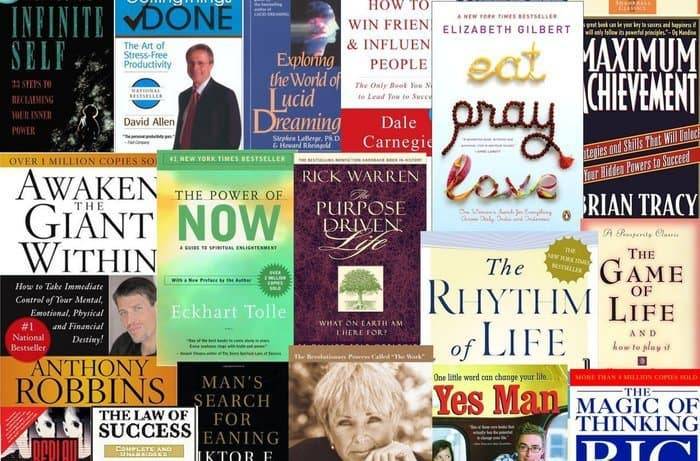Do you ever find yourself completely absorbed in an activity, losing track of time and experiencing a deep sense of enjoyment and fulfillment?
This state of mind, known as dispositional flow or the flow state, holds the key to unlocking your potential for personal growth, self-improvement, and peak performance.
Dispositional flow, extensively studied by psychologist Mihaly Csikszentmihalyi, is a state where you are fully immersed in an activity, experiencing a seamless alignment of your skills and the challenges at hand.
It is a worry-free and highly enjoyable experience, where you are fully engaged, focused, and in control of your actions.
Embracing dispositional flow in your daily life can lead to a multitude of benefits. From enhanced productivity and brain function to living in the present moment, flow can truly transform the way you approach and engage with activities.
In this article, we will delve into the concept and meaning of flow, the theory behind it, and how you can enter a state of flow. We will also explore how flow manifests in different settings and cultures, as well as its impact across the lifespan.
By the end, you will have a deeper understanding of dispositional flow and the incredible potential it holds for your psychological well-being.
Key Takeaways:
- Dispositional flow, also known as the flow state, is a state of mind where individuals are fully absorbed and immersed in an activity.
- Flow is characterized by a seamless alignment of skills and challenges, leading to a worry-free and highly enjoyable experience.
- Flow is associated with increased productivity, enhanced brain function, reduced anxiety, and a deep sense of fulfillment.
- Flow can be accessed through triggers such as clear goals, a balance between skills and challenges, and engaging in activities aligned with your interests and passions.
- Flow can be experienced in various settings and cultures, and it is not limited to specific age groups.
The Concept and Meaning of Flow
Flow is a psychological state characterized by complete absorption and focus in an activity. It is a state of optimal experience where individuals feel fully engaged and enjoy the process of the activity itself.
Flow is often described as an autotelic experience, meaning that it is intrinsically rewarding and enjoyable. It is a state where individuals feel a sense of control, lose track of time, and experience a deep sense of fulfillment and happiness.
When you are in a state of flow, you are fully immersed in the present moment, effortlessly and seamlessly navigating the challenges of the task at hand. Your skills and abilities perfectly match the demands of the activity, resulting in a heightened sense of focus and enjoyment.
The concept of flow was first introduced by psychologist Mihaly Csikszentmihalyi, who extensively studied this phenomenon and its impact on individuals’ overall well-being.
Csikszentmihalyi found that flow is not limited to specific activities or domains but can be experienced in various areas of life, such as work, sports, arts, and hobbies.
“Being completely involved in an activity for its own sake. The ego falls away. Time flies. Every action, movement, and thought follows inevitably from the previous one, like playing jazz. Your whole being is involved, and you’re using your skills to the utmost.” – Mihaly Csikszentmihalyi
Flow is a state that transcends external rewards or motivations. It is about engaging in activities purely for the joy and satisfaction they bring.
Whether you are painting, playing a musical instrument, solving a challenging problem, or engaging in any activity that captivates your attention and ignites your passion, flow allows you to tap into your inner potential and experience a heightened sense of fulfillment.
In the next section, we will delve deeper into the theory and psychology of flow, exploring the factors that contribute to this remarkable state of optimal experience.
The Theory and Psychology of Flow
Mihaly Csikszentmihalyi, a renowned psychologist, has developed a comprehensive theory of flow that delves into its psychological underpinnings. According to Csikszentmihalyi, flow is achieved when there is a delicate balance between the level of challenge presented by an activity and an individual’s skill level.
It is in this state that individuals feel completely focused and engaged in the task at hand, experiencing a sense of effortless concentration and enjoyment.
Flow is closely associated with positive psychology, a branch of psychology that focuses on cultivating well-being and flourishing in individuals. Positive psychology seeks to understand the factors that contribute to a fulfilled and meaningful life.
Csikszentmihalyi’s flow theory aligns with this perspective, as engaging in flow-inducing activities has been linked to increased happiness, fulfillment, and personal growth.
“When we are in flow, we experience a state of complete immersion and absorption in our activities. Time flies by, and we effortlessly navigate through the challenges presented to us. It is in these moments that we truly feel alive and connected to our highest potential.”
Flow is not limited to specific domains or activities. It can be experienced in various contexts, such as work, sports, arts, and everyday tasks. The key is finding activities that provide an optimal balance between challenge and skill, encouraging a state of effortless flow.
Csikszentmihalyi’s research has highlighted the positive impact of flow on motivation, creativity, and personal development. By understanding the theory and psychology of flow, we can harness its power to enhance our lives and well-being.
The Key Elements of Flow
According to Csikszentmihalyi, there are several key elements that contribute to the flow experience:
- Clear goals: Having clear goals and knowing what needs to be done enables individuals to enter a state of flow more easily.
- Concentration and focused attention: Flow requires intense focus and concentration on the task at hand, allowing individuals to fully immerse themselves in the activity.
- Immediate feedback: Flow is facilitated by receiving immediate and clear feedback on performance, enabling individuals to adjust their actions accordingly.
- A balance between challenge and skill: Flow occurs when the level of challenge presented by an activity matches an individual’s skill level. Too much challenge can lead to anxiety, while too little challenge can result in boredom.
| Benefits of Flow | How Flow Relates to Positive Psychology |
|---|---|
| • Increased happiness and fulfillment | • Enhances psychological well-being |
| • Improved performance and productivity | • Promotes personal growth and self-improvement |
| • Boosts creativity and problem-solving abilities | • Cultivates a sense of meaning and purpose in life |
Engaging in activities that promote flow can have profound effects on our lives. It not only allows us to experience moments of deep enjoyment and focus but also contributes to our overall well-being.
As we continue our exploration of flow, we will dive deeper into the benefits it offers in various aspects of life and how we can actively cultivate and enter a state of flow.
The Benefits of Dispositional Flow
Dispositional flow, also known as the flow state, offers a multitude of benefits across various aspects of life. When you experience flow, you tap into a state of heightened motivation, productivity, and efficiency in your tasks.
Flow has a profound impact on brain function, enhancing cognitive performance and fostering creative thinking. Moreover, flow allows you to truly live in the present moment, reducing anxiety and promoting overall well-being.
When you are in a state of flow, you become fully immersed in the activity at hand. Your mind and body align effortlessly, enabling you to focus your attention and skills on the task.
This focused state enhances your productivity, as you are able to work efficiently without distractions. Whether you’re tackling a work project, engaging in a hobby, or pursuing a passion, flow enables you to accomplish more in less time.
| Benefits of Dispositional Flow |
|---|
| Increased Motivation and Productivity |
| Enhanced Brain Function |
| Living in the Present moment |
One of the key benefits of flow is its positive impact on brain function. When you are in a state of flow, your brain operates at its optimal level, leading to improved cognitive performance.
This heightened mental state allows for greater focus, concentration, and problem-solving abilities. Additionally, flow stimulates creative thinking, enabling you to approach tasks from new and innovative perspectives.
In today’s fast-paced world, it’s easy to become caught up in worries about the past or anxieties about the future. However, flow helps you break free from that cycle by immersing you entirely in the present moment.
When you are in a flow state, you are fully engaged in the activity, giving your undivided attention to the here and now. This presence and mindfulness reduce stress and promote a sense of calm and contentment.
“Flow is being completely involved in an activity for its own sake. The ego falls away. Time flies. Every action, movement, and thought follows inevitably from the previous one, like playing jazz. Your whole being is involved, and you’re using your skills to the utmost.”
By experiencing flow, you unlock your potential for peak performance and overall well-being. You are able to live a more meaningful and satisfying life by fully engaging in each activity, feeling a sense of control, and experiencing deep enjoyment and fulfillment.
As you strive to incorporate flow into your daily life, remember that it is a practice. It requires finding activities that challenge and engage you, setting clear goals, and providing immediate feedback. Cultivate a mindset of focus, presence, and openness to fully embrace flow.
Next, we will explore how to access the state of flow and the activities that can unlock this optimal experience.
How to Enter a State of Flow
To experience the state of flow, you can employ various triggers and engage in specific activities that promote this heightened state of engagement and focus. By understanding these triggers and incorporating them into your daily life, you can enhance your ability to enter a state of flow and reap its numerous benefits.
Triggers for Flow
Flow can be initiated by paying attention to certain factors that create an optimal environment for its emergence. Some common triggers for flow include:
- Clear goals: Having a well-defined objective or purpose for an activity can help channel your attention and focus, contributing to the flow experience.
- Balance between skills and challenges: Finding the right balance between the level of difficulty and your personal skill set is crucial. Striking this equilibrium keeps you fully engaged without feeling overwhelmed or bored.
- Immediate feedback: Receiving immediate feedback on your performance allows you to make necessary adjustments, maintains your focus, and keeps you in the flow state.
Activities for Flow
Engaging in specific activities that align with your interests and passions can enhance your chances of experiencing flow. These activities typically provide a sense of purpose, enjoyment, and fulfillment. Here are a few examples:
| Activities for Flow | Description |
|---|---|
| Playing a musical instrument | Immerse yourself in the joy of creating music and lose track of time as you become deeply engrossed in the melodies. |
| Engaging in sports | Participate in a sport you love, where you can fully utilize your skills and experience a sense of exhilaration and complete focus. |
| Creating artwork | Express your creativity through various art forms, such as painting, sculpting, or writing, and get lost in the process. |
Remember, the key is to select activities that resonate with your passions and interests, as they are more likely to evoke a deep sense of flow.
Meditation and Flow
Incorporating practices like meditation and mindfulness can help cultivate a mindset conducive to flow. These practices promote self-awareness, clarity, and the ability to remain present in the moment.
By training your mind to be fully engaged and focused, you can enhance your ability to enter the flow state.
Flow is not just a state of mind; it’s a way of being fully present and actively connected to the world around you.
By incorporating triggers for flow, engaging in activities that align with your passions, and cultivating a focused mindset through practices like meditation, you can unlock the power of flow and experience the joy and fulfillment it brings.

Flow in Different Settings and Cultures
Flow is not limited to a specific domain or culture; it can be experienced in various settings, including work, sports, arts, and daily life activities.
The principles of flow remain consistent regardless of the context, allowing individuals to tap into their optimal performance and experience a state of deep engagement and satisfaction.
The Flow in Work
In the realm of work, achieving flow is essential for productivity, efficiency, and job satisfaction. When you experience flow in your work, you enter a state of complete focus and enjoyment. Challenges are met with enthusiasm, and skills are effortlessly applied.
The work becomes more meaningful, and time seems to fly by. Flow in work is a catalyst for innovation, creativity, and personal growth.
The Flow in Sports
Sports offer a unique arena for experiencing flow. Athletes often describe being in “the zone” when they achieve a state of complete immersion. In this state, everything aligns perfectly: mind, body, and performance.
Time slows down, and the athlete effortlessly anticipates and responds to the challenges of the game. Flow in sports is characterized by heightened awareness, peak physical performance, and a sense of being completely in sync with the task at hand.
Cross-Cultural Perspectives on Flow
The concept of flow is not confined to any specific culture; however, different cultures may emphasize and achieve flow through diverse means. Cultural influences shape the values, goals, and activities that facilitate flow experiences.
For example, collectivist cultures may emphasize flow in teamwork and collaboration, while individualistic cultures may promote flow in personal accomplishments and independent pursuits.
Recognizing these cross-cultural perspectives on flow allows us to appreciate the diversity of human experiences and the various pathways to achieving flow.
Summary Table: Flow in Different Settings and Cultures
| Setting | Characteristics | Benefits |
|---|---|---|
| Work | Complete focus, enjoyment, meaningful tasks | Increased productivity, creativity, job satisfaction |
| Sports | Heightened awareness, peak performance, synchronization | Enhanced athletic abilities, enjoyment, flow state |
| Cross-Cultural Perspectives | Diverse means of achieving flow, cultural influences | Appreciation of cultural diversity, broader understanding of flow experiences |
Whether it’s achieving flow in the workplace, excelling in sports, or understanding the cross-cultural perspectives, flow is a universal phenomenon that transcends boundaries.
By recognizing the commonalities and differences in flow experiences across various settings and cultures, we can gain deeper insights into human psychology, performance, and well-being.
Flow Across the Lifespan
Flow is not limited to specific age groups and can be experienced across the lifespan. Regardless of age, individuals have the capacity to enter a state of flow and experience the many benefits it offers.
Let’s explore how flow manifests in different age groups and its impact on overall well-being.
Flow in Children
Children are naturally inclined to experience flow during play and creative activities. Whether it’s building towering block structures, painting vibrant masterpieces, or playing their favorite sports, children effortlessly immerse themselves in the present moment, fully engaged and absorbed in the activity at hand.
This state of flow fosters their creativity, cognitive development, and emotional well-being, laying the foundation for a lifelong love of learning and exploration.

Flow in Older Adults
As individuals enter older adulthood, there may be potential declines in certain skills and physical abilities. However, age does not preclude older adults from experiencing flow.
In fact, engaging in activities that promote flow can enhance their overall well-being and contribute to a sense of purpose and fulfillment. Whether it’s gardening, playing a musical instrument, or volunteering for a cause they are passionate about, older adults can tap into the flow state and continue to experience the joy and satisfaction that it brings.
Age and Flow
It is important to note that age alone does not determine one’s ability to experience flow. Rather, flow is about engaging in meaningful activities that align with an individual’s interests, strengths, and passions.
By focusing on activities that bring joy, challenge, and a sense of growth, individuals of all ages can continuously cultivate the flow state and reap its numerous benefits.
Conclusion
In conclusion, embracing the mindset of dispositional flow can have profound benefits for your personal growth and overall well-being. By understanding the principles of flow and actively cultivating it in your daily life, you can unlock your potential for peak performance and fulfillment.
Flow allows you to fully engage in activities that align with your interests and passions, providing a sense of control and deep enjoyment.
One of the key benefits of flow is its ability to enhance your productivity and efficiency. When you are in a state of flow, you become fully absorbed in the task at hand, eliminating distractions and maximizing your focus.
This heightened concentration translates into heightened performance, allowing you to accomplish tasks more effectively and efficiently.
Moreover, flow has a positive impact on your brain function. Studies have shown that when you are in a state of flow, your brain enters a heightened state of creative thinking and problem-solving.
By engaging in activities that promote flow on a regular basis, you can sharpen your cognitive skills and enhance your ability to think outside the box.
Embracing flow also allows you to live in the present moment and reduce anxiety. When you are fully immersed in an activity, time seems to fly by as you lose yourself in the experience.
This present-centeredness not only brings a sense of joy and fulfillment, but it also helps you let go of worries about the past or the future. By focusing on the here and now, you can cultivate a deep sense of peace and tranquility.
FAQ
What is dispositional flow?
Dispositional flow, also known as the flow state, is a state of mind where individuals are fully absorbed and immersed in an activity. It is characterized by a seamless alignment of skills and challenges, leading to a worry-free and highly enjoyable experience.
What is the concept and meaning of flow?
Flow is a psychological state characterized by complete absorption and focus in an activity. It is a state of optimal experience where individuals feel fully engaged and enjoy the process of the activity itself. Flow is often described as an autotelic experience, meaning that it is intrinsically rewarding and enjoyable.
What is the theory and psychology behind flow?
Mihaly Csikszentmihalyi, a renowned psychologist, has developed a comprehensive theory of flow and its psychological underpinnings. According to Csikszentmihalyi, flow is a result of achieving a balance between the level of challenge and an individual’s skill. It is when individuals feel fully focused and engaged in an activity that matches their abilities.
What are the benefits of dispositional flow?
Dispositional flow offers numerous benefits in various aspects of life. When individuals experience flow, they are more motivated, productive, and efficient in their tasks. Flow also has a positive impact on brain function, enhancing cognitive performance and creative thinking.
Additionally, flow allows individuals to live in the present moment, reducing anxiety and increasing their overall well-being.
How can I enter a state of flow?
Flow can be accessed through various triggers and activities. Some common triggers for flow include clear goals, a balance between skills and challenges, and immediate feedback.
Engaging in activities that align with one’s interests and passions can also promote flow. Additionally, practices like meditation and mindfulness can help individuals cultivate a mindset conducive to flow.
Can flow be experienced in different settings and cultures?
Yes, flow can be experienced in various settings, including work, sports, arts, and daily life activities. Whether it’s achieving flow in a professional setting, during sports performance, or engaging in creative pursuits, the principles of flow remain consistent.
Additionally, flow is influenced by cultural factors, with different cultures emphasizing different aspects of flow and achieving it through diverse means.
Can flow be experienced across different age groups?
Yes, flow is not limited to specific age groups and can be experienced across the lifespan. Children often naturally experience flow during play and creative activities.
Older adults, despite potential declines in certain skills, can still engage in activities that promote flow and enhance their overall well-being. Age does not seem to be a determining factor for flow; rather, it is the engagement in meaningful activities that matters.
What are the key takeaways about dispositional flow?
Dispositional flow, or the flow state, is a valuable mindset that can lead to optimal experiences and personal growth. By understanding the principles of flow and implementing strategies to cultivate it, individuals can unlock their potential for peak performance and psychological well-being.
Flow allows individuals to fully engage in activities, feel a sense of control, and experience deep enjoyment and fulfillment. Embracing flow in daily life can lead to a more meaningful and satisfying existence.




























































